Next: Emitter Follower Up: ch4 Previous: Small-Signal Model and H
The transistor amplifier in the example
here
has a voltage gain of
150, based on the assumption of zero internal resistance 





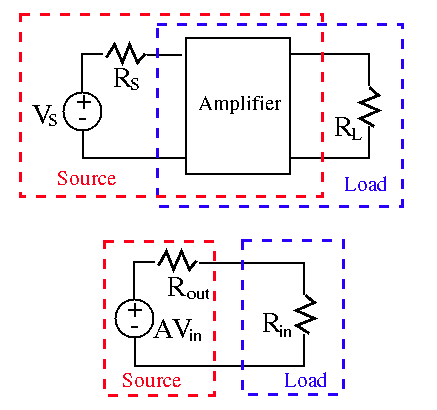
In the first figure, everything inside the red box, including the
amplifier as well as 








Consider the typical transistor AC amplification circuit below:
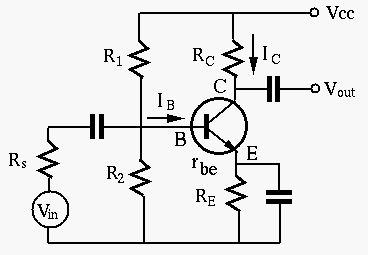
If the capacitances of the coupling capacitors and the emitter by-pass
capacitor are large enough with respect to the frequency of the AC signal
in the circuit is high enough, these capacitors can all be approximated as
short circuit. Moreover, note that the AC voltage of the voltage supply

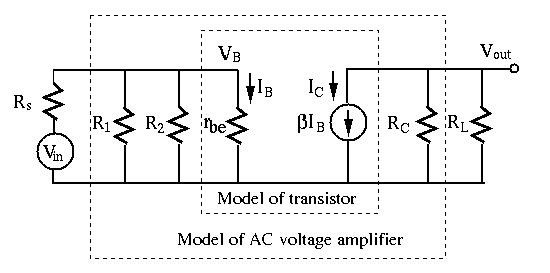
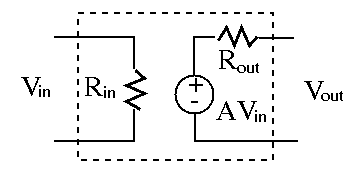
As shown above, this AC small signal equivalent circuit can be modeled by as an active circuit containing three components:
For AC signals, the input of the amplification circuit is shown below,
where 



 |
(68) |
 .
.
This is simply the resistance of the resistor

Given the AC input voltage 
 |
(69) |
 and collect voltage is
and collect voltage is
 |
(70) |
 is
is  out of
phase with
out of
phase with  .
The voltage gain is:
.
The voltage gain is:
 |
(71) |
 |
(72) |
 |
(73) |
 , we want to have smaller
, we want to have smaller  and
greater
and
greater  . However, this also means the input resistance
. However, this also means the input resistance
 is small and the output resistance
is small and the output resistance
 is large, neither is desirable.
is large, neither is desirable.
Note that 


Also note that 



Example 1:
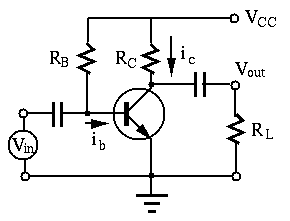





 |
(74) |
 |
 |
||
 |
 |
(75) |
 :
:
 |
(76) |
The AC load is




 |
(77) |
 |
(78) |
Assume AC input voltage is


 |
(79) |
 |
(80) |
 .
.

As shown here,
 |
(81) |
 |
(82) |
The output current is
 |
(83) |
 |
(84) |
 |
(85) |
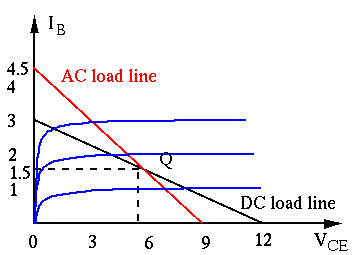
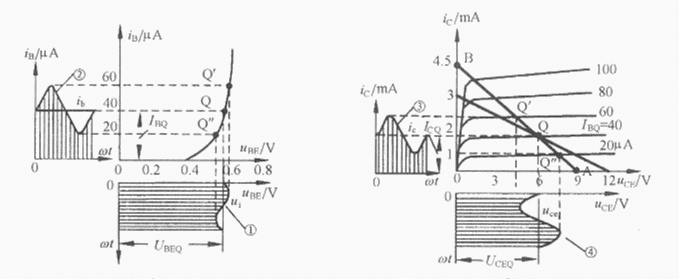
The circuit above can also be analyzed using the small-signal model.
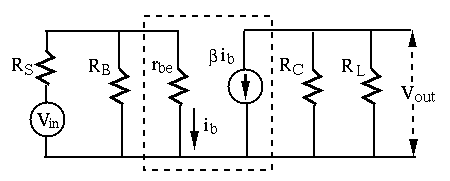
 |
(86) |
 |
(87) |
 ,
the output resistance is
,
the output resistance is
 .
.
Example 2:
Consider the circuit below with its AC small-signal model:
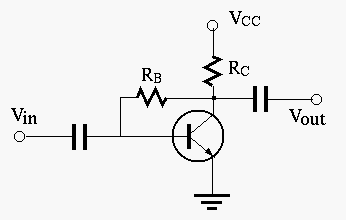
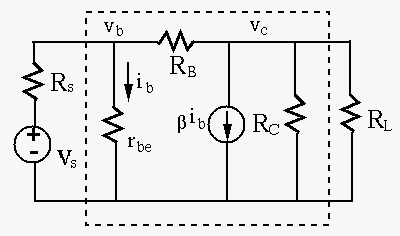
We can find the voltage gain, the input and output resistances when



Apply KCL to the collector to get
 |
(88) |
 |
(89) |
 and then find the AC voltage gain:
and then find the AC voltage gain:
 |
 |
 |
|
 |
 |
 |
(90) |
 .
We see that when
.
We see that when
 , i.e., there is not negative
feedback, the gain becomes the same as the result before without feedback.
, i.e., there is not negative
feedback, the gain becomes the same as the result before without feedback.
The input resistance is the parallel combination of 






 |
(91) |
 .
The resistance can then be found as
.
The resistance can then be found as
 |
(92) |
 |
(93) |
 is simply
is simply
 |
(94) |
 :
:
The short-circuit current by 



 |
(95) |
 |
 |
 |
|
 |
 |
(96) |
Example 3:
Consider both the DC operating point and its AC small signal model of
the circuit below, where

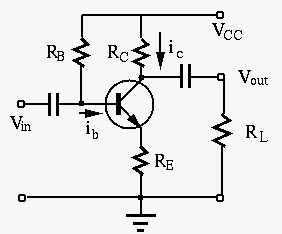
We realize 
 |
(97) |
We first apply KVL to the base path to get
 |
(98) |
 |
(99) |
We then find 

 assuming
assuming
 :
:
 |
(100) |
 |
(101) |
 |
(102) |
 assuming
assuming
 :
:
 |
(103) |
 |
(104) |
 .
.
Next consider the AC equivalent circuit based on small-signal model of the transistor in the dashed line box:
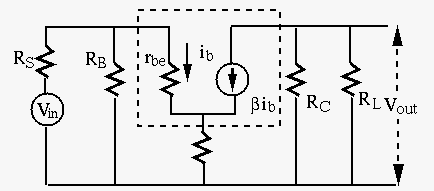
As 
 |
(105) |
 :
:
 |
(106) |
 |
(107) |
 |
 |
 |
|
 |
 |
(108) |
 ):
):

 ):
):

 |
(109) |
 increases the
input resistance, and stabalizes the DC operating point as well as the
AC voltage gain.
increases the
input resistance, and stabalizes the DC operating point as well as the
AC voltage gain.